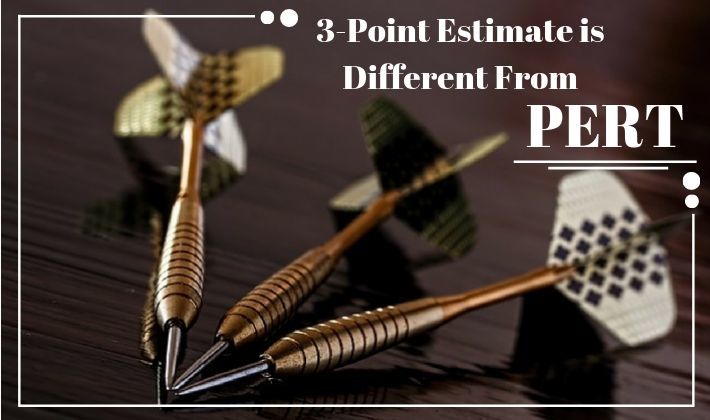You might be looking to understand what Work Breakdown Structure (WBS) is and why is it important in project management.
Work Breakdown Structure is deliverable oriented hierarchical decomposition of total scope of work. WBS is a fabulous tool delineate and represent total scope – project as well as product scope. It is useful for estimating, planning, executing and monitoring & controlling work.
Some people might say, rather facetiously, that a WBS is the work required to break you (the PM) down. It is true that PMs are usually so much overburdened with their projects that they are on the verge of breaking down but WBS makes life of a PM easy. WBS decomposes the total scope of work into smaller more manageable components.
In this post, you will find detailed explanation of WBS with the help of an example. You will understand its meaning, advantages, and utility of the WBS. You will also know the importance and purpose of WBS. By the end of this post, you will be able to create one easily.
You can also look at the following video to understand know more about WBS.
Work Breakdown Structure (WBS) in Project Management
Even though WBS is extremely helpful, in my experience, WBS is rarely used by the practicing project managers. Some find it cumbersome to draw while others just do not know how to make a purposeful WBS.
WBS is very easy to understand and quite easy to draw. Moreover, it has immense utility – it is a proverbial pillar for successfully completing the projects. There are many books/articles that can guide you to draw a WBS. I will not repeat those things; I will rather concentrate on understanding the importance of a WBS.
Should it be drawn? Can I just make it by representing as bullet and sub-bullet points?
A WBS can be drawn/represented either as a hierarchical (like an inverted tree) structure or as bullet points. Both techniques have certain advantages as well as disadvantages but either one can be used by PMs.
What is the formal definition of WBS?
WBS is deliverable oriented hierarchical decomposition of total scope of work to be carried out by the project team to accomplish the project objectives and create required deliverables.
There are few keywords in the above definition:
- Total scope – WBS represents total scope of work. The work, not represented by WBS, is not part of project. The WBS should be drawn completely to delineate complete scope; nothing should be left out.
- Hierarchical decomposition – The scope of work is decomposed (divided & subdivided) hierarchically. A higher level node represents bigger chunks of work while the lower level node represents smaller chunk (or a division) of work. All the child nodes roll up to the parent node. Project will finish if the team completes all the work represented by the lowest level nodes.
- Deliverable oriented – One should always think about deliverable while defining any node and breaking down (decomposing) a parent node into child nodes. A deliverable is an outcome that can be perceived and holds some value. A deliverable is required by stakeholder(s). A deliverable represented by a WBS node can be intermediate outcome leading to the final outcome or the final outcome itself.
WBS is NOT task oriented and it should not be represented by tasks or activities.
What is the difference between a deliverable and an activity?
A deliverable is the result or outcome of series of activities. An activity, by itself, may not produce any tangible result.
Why is WBS important?
- WBS is a pictorial representation of scope; it represents total scope of work. A picture is worth thousand words and hence easy to understand & follow.
- WBS represents total scope and hence it can act as a checklist for the project. A PM can easily tell what all has been accomplished and what is remaining in the project.
- Each successive level of WBS provides a basis for more accurate estimation of effort, duration, resources and cost.
- The deliverable, as represented by WBS, can be easily monitored and tracked.
- Historical WBS can act as a templates for future work – specifically for some repetitive processes. It results in easier and faster project planning.
- Smaller work can be easily assigned to individual team members and they can be made accountable.
- Most important it reduces the project risk.
Think about “nouns” (deliverable) while drawing WBS and it will not be painful. Remember WBS does not break you down, it rather breaks the work in smaller pieces to make your life easier.


![Which Type of Contract Is Most Risky In Procurement [PMP]](https://www.pmbypm.com/wp-content/uploads/2012/02/Type-of-Contract.png)






Nice post, Praveen. I may use this in my PM Essentials course, where we just did sample WBSs last night, using a home cleanup project as an example!
Please use it. Thanks.
Hi Praveen, really good point taken, as WBS forms the basis of scope finalization.
excellent post Mr. Praveen again !
Nice post Praveen
A very educational post. Helped me a lot.
Hi Praveen Sir,
Please can you elaborate WBS bit more with generic example like “Setting up a PMO”
Thanks in advance.
Regards.
Praveen you have been posting such a wonderful articles which helps us lot, keep it up mate.
Breaking up the chucks of work is essential for your planning. WBS is nice, however the PBS (Product Breakdown Structure) and PFD (Product Flow Diagram) are the planning techniques I use to make my Schedule and finally my activity based project sheet. WBS is more used as an allocation of work (work package) to a certain party. PBS and PFD are both techniques from Prince2.
Hello, I am making use of the Sticky Tab method of taking in account everything that is in Scope into a Numbered WBS. We just did it this week with a new project on a program I am currently working on and it is very beneficial. What we do, just after we’ve recorded it into a PMIS, is to go back to the original WBS on Sticky Notes, draw dependencies with another color and now draw our RBS from bottom up onto the WBS on another color, to start of with high level Risks and what we will do in the following month is now to explore those dependencies and add it to the Dependency Log, add all the assumptions to the Assumption Log, explore the risks further and add to the Risk Log. We will also now go via the Agile Approach and explore our work packages further for specifically the Technology Development piece’s of work.
While I believe WBS is important, in some environments, I have been challenged with this due to experience level of BA & QA’s. OR a sponsor who is new to PM methodology, challenged to define scope or time in advance or sometimes there are those who don’t care.. What suggestions do you have when it comes to issues such as these?
WBS should be made for every type of project.